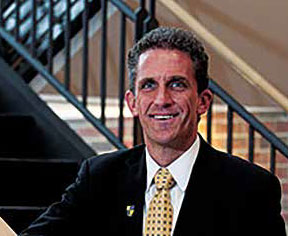
By Lane Glenn, President
Northern Essex Community College
In his State of the Union address Tuesday night, President Obama announced “America’s College Promise,” a bold proposal to make community college education free.
President Obama noted that more than 40% of college students across the country are already choosing community colleges for their education, and explained, “Some are young and starting out. Some are older and looking for a better job. Some are veterans and single parents trying to transition back into the job market. Whoever you are, this plan is your chance to graduate ready for the new economy, without a load of debt.”
The president’s plan is modeled after a recently launched effort in Tennessee. It guarantees two years of free community college courses by providing tuition-free classes for students going to school at least half time who maintain a grade point average of 2.5 or higher and make steady progress toward a degree or transferring to a four-year institution.
There is a lot to like about this idea. It recognizes the important role community colleges already play in giving underserved students a place to start, and in providing necessary skills and credentials for the workforce. It may open the door to a college education a little wider by making it more affordable for those at the lowest income levels. And it does build in some accountability, requiring students who benefit from it to keep up their grades and make progress toward graduation.
And, as well intentioned as it may be, the president’s plan has also received some thoughtful criticism. The most obvious, of course, is: Where will the money come from?
The White House itself estimates that the plan could involve about nine million students, costing the federal government about $60 billion over 10 years and another $20 billion from states that opt in. At a time when Massachusetts is trying to dig its way out of a $750 million deficit and the national debt exceeds $18 trillion, is it realistic to think the government—at any level—can invest in a plan like this?
Beyond the sticker shock, though, President Obama’s proposal has sparked a constructive conversation among analysts on both sides of the political divide, and in the hallways of college campuses everywhere, about what kind of investments in college student success might really matter.
For example, the president’s plan takes aim at college tuition, which may be the most talked about expense in higher education, but in the end, not the most significant. In a state like Massachusetts, the tuition at public community colleges is relatively meager—only about $750 a year—while the fees colleges charge vary widely, and are typically another $4,000-5,000 a year. (For a complete breakdown of tuition and fees for Massachusetts’ public colleges and universities, visit the Department of Higher Education’s web site.)
On top of this, for many students, tuition and fees are covered by financial aid and scholarships, while books, transportation, child care costs, and living expenses are the budget busters that drive them to work two jobs, skip class assignments, and drop out before completing a degree.
While his tone may be a little abrasive and his statistics on the community college dropout rate completely wrong, David Brooks published an otherwise thoughtful and practical editorial about investing in college student success in the New York Times last Monday.
In “Support our Students,” instead of underwriting tuition, Brooks argues for addressing those student living expenses—like books, transportation, and child care—first, then moving on to subsidize the cost of guidance counselors and mentors; and to improving student preparedness for college in the first place, to reduce or eliminate the need for remedial education.
That package isn’t as neatly delivered as a proposal for tuition-free community colleges. But to the 1,200 or so public community college campuses across the country that have been doing “more with less” for over a decade now, and may be understandably skeptical about the idea of sustained government investment in education, new resources for the things that matter most to students would be a welcome and refreshing change of pace—and a promise we would like to keep.




